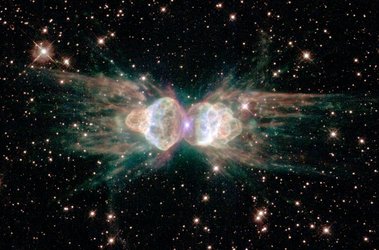Accept all cookies Accept only essential cookies See our Cookie Notice

About ESA
The European Space Agency (ESA) is Europe’s gateway to space. Its mission is to shape the development of Europe’s space capability and ensure that investment in space continues to deliver benefits to the citizens of Europe and the world.
Highlights
ESA - United space in Europe
This is ESA ESA facts Member States & Cooperating States Funding Director General Top management For Member State Delegations European vision European Space Policy ESA & EU Space Councils Responsibility & Sustainability Annual Report Calendar of meetings Corporate newsEstablishments & sites
ESA Headquarters ESA ESTEC ESA ESOC ESA ESRIN ESA EAC ESA ESAC Europe's Spaceport ESA ESEC ESA ECSAT Brussels Office Washington OfficeWorking with ESA
Business with ESA ESA Commercialisation Gateway Law at ESA Careers Cyber resilience at ESA IT at ESA Newsroom Partnerships Merchandising Licence Education Open Space Innovation Platform Integrity and Reporting Administrative Tribunal Health and SafetyMore about ESA
History ESA Historical Archives Exhibitions Publications Art & Culture ESA Merchandise Kids Diversity ESA Brand CentreLatest
Space in Member States
Find out more about space activities in our 23 Member States, and understand how ESA works together with their national agencies, institutions and organisations.
Science & Exploration
Exploring our Solar System and unlocking the secrets of the Universe
Go to topicAstronauts
Missions
Juice Euclid Webb Solar Orbiter BepiColombo Gaia ExoMars Cheops Exoplanet missions More missionsActivities
International Space Station Orion service module Gateway Concordia Caves & Pangaea BenefitsLatest
Space Safety
Protecting life and infrastructure on Earth and in orbit
Go to topicAsteroids
Asteroids and Planetary Defence Asteroid danger explained Flyeye telescope: asteroid detection Hera mission: asteroid deflection Near-Earth Object Coordination CentreSpace junk
About space debris Space debris by the numbers Space Environment Report In space refuelling, refurbishing and removingSafety from space
Clean Space ecodesign Zero Debris Technologies Space for Earth Supporting Sustainable DevelopmentLatest
Applications
Using space to benefit citizens and meet future challenges on Earth
Go to topicObserving the Earth
Observing the Earth Future EO Copernicus Meteorology Space for our climate Satellite missionsCommercialisation
ESA Commercialisation Gateway Open Space Innovation Platform Business Incubation ESA Space SolutionsLatest
Enabling & Support
Making space accessible and developing the technologies for the future
Go to topicBuilding missions
Space Engineering and Technology Test centre Laboratories Concurrent Design Facility Preparing for the future Shaping the Future Discovery and Preparation Advanced Concepts TeamSpace transportation
Space Transportation Ariane Vega Space Rider Future space transportation Boost! Europe's Spaceport Launches from Europe's Spaceport from 2012Latest

An unblinking eye
Thank you for liking
You have already liked this page, you can only like it once!
Three thousand light years from Earth, the Cat’s Eye Nebula (NGC 6543) is a sight that draws in the human eye. In this image from the NASA/ESA Hubble Space Telescope, numerous bubbles are visible – shapes generated by the ejection of glowing gas as the star at its centre approaches the end of its life.
While large stars die in supernova explosions, average Sun-like stars form planetary nebulas as they exhaust their fuel supplies and slowly expire. The name ‘planetary nebula’ arose because the round shape, sculpted as layers of material are ejected, looked a little like a planet in small telescopes.
The Cat’s Eye Nebula was discovered by William Herschel in 1786, and remains an interesting target for ground-based astronomers. Amateurs can see the magnitude 8.1 blob in the sky well enough to resolve the Cat’s Eye shape, while large telescopes have identified a wider halo extending into space.
This image was published on the ESA Portal in 2004, but the Hubble Space Telescope first revealed the nebula’s intricate structure in 1994.
Observations of its intricate concentric gas shells and unusual shock-induced knots of gas suggest that the star ejected its mass in a series of pulses at 1500 year intervals. These convulsions created dust shells that each contain as much mass as all of the planets in our Solar System combined.
-
CREDIT
ESA, NASA, HEIC and The Hubble Heritage Team (STScI/AURA) -
LICENCE
ESA Standard Licence

Hubble’s 24th birthday snap of Monkey Head Nebula

The Egg Nebula

Ant Nebula

A cosmic trick of the eye















 Germany
Germany
 Austria
Austria
 Belgium
Belgium
 Denmark
Denmark
 Spain
Spain
 Estonia
Estonia
 Finland
Finland
 France
France
 Greece
Greece
 Hungary
Hungary
 Ireland
Ireland
 Italy
Italy
 Luxembourg
Luxembourg
 Norway
Norway
 The Netherlands
The Netherlands
 Poland
Poland
 Portugal
Portugal
 Czechia
Czechia
 Romania
Romania
 United Kingdom
United Kingdom
 Slovenia
Slovenia
 Sweden
Sweden
 Switzerland
Switzerland
























